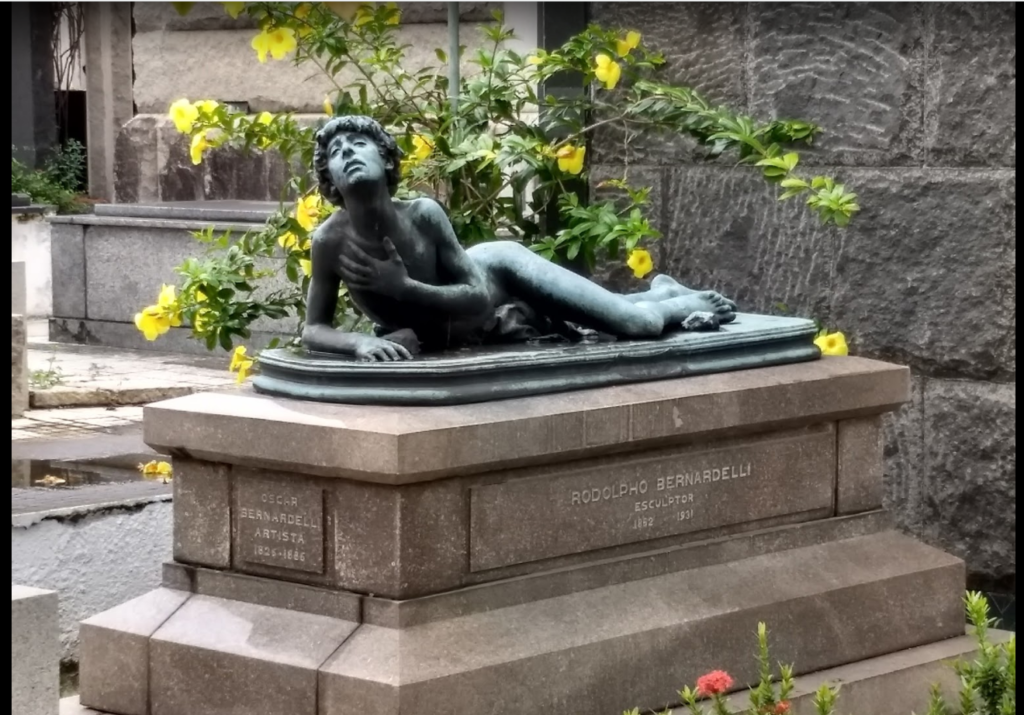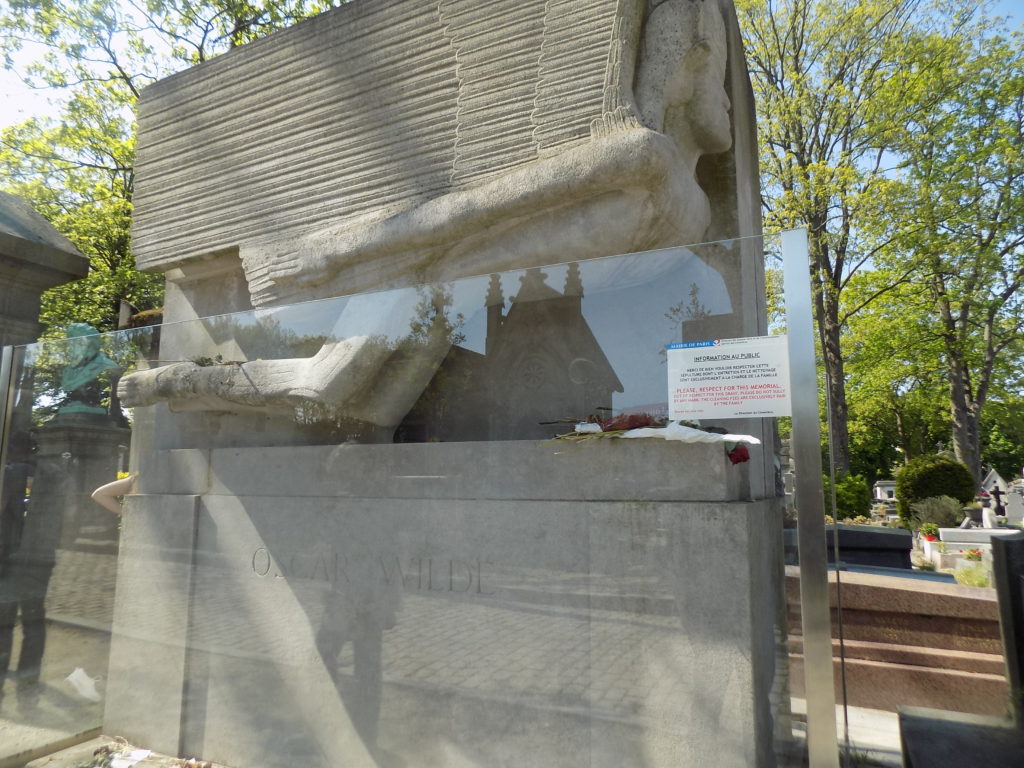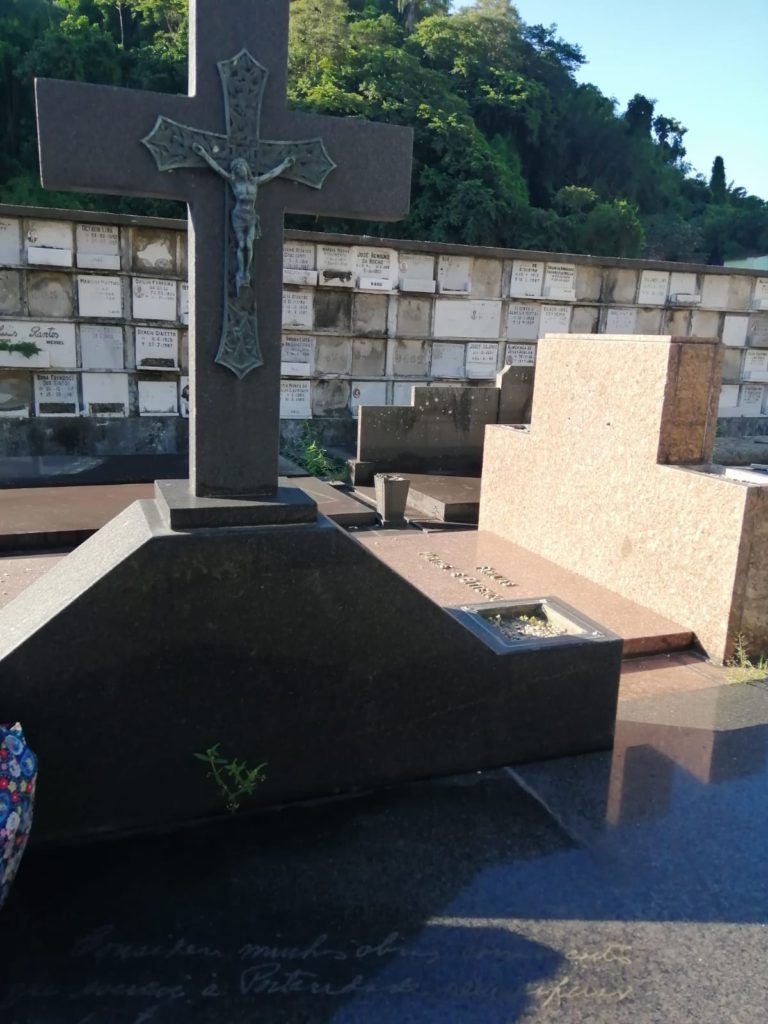Another city, another city of the dead.
Those of you who have, through this blog, joined me on my global travels are probably acutely aware of my penchant for visiting cemeteries. Beginning with my visit with Erin nearly six years ago to Novodevichy in Moscow and most recently with an afternoon spent in Pére Lachaise in Paris (the link is to the first of a series of posts about Pére Lachaise), you should find it unsurprising that I planned to spend my free afternoon in Rio exploring the Cemitério São João Batista.
Some readers might think me somewhat morbid because of my fascination with cemeteries. Perhaps that’s so. But there’s also more to it. Whatever our differences, all humans, all living things share death. Humans, in particular, also share funeral rituals. While the evidence is considered inconclusive, archaeologists have discovered Neanderthal skeletons as old as 300,000 years across Europe and western Asia buried under a layer of flower pollen. The earliest undisputed human burial dates back an estimated 100,000 years.
Cultural historians contend that funeral rituals across cultures are highly predictable and can be seen as a stabilizing force within communities. Often, they describe the five characteristics – significant symbols, gathered community, ritual action, cultural heritage, and some symbolic transition of the corpse – that tend to cross-culturally unite these services. While a cemetery visit doesn’t allow me to observe all five, sometimes, a funeral might pass by
and, in this instance, it prompted a discussion between Jill and me about the changing mores of formality. (We don’t know if the level of informal dress we saw in this particular funeral is typical in Rio or whether it is a recent development or reflects a longer-term norm but we both noted the increasing informality of both American and UK funerals.) Cemetery visits also allow me some measure of exploring the similarities and the sometimes subtle differences in the ways that different cultures choose to memorialize their dead. I’ll also look for evidence of recent visits from survivors – candles, flowers, pebbles, and the like because that too makes a cultural statement.
I am also drawn to cemeteries that hold, as many do, interesting works of art
or, as is the case of Zagreb’s Mirogoj, are works of art in and of themselves.
Of course, I also like discovering the manner in which people who achieved great notoriety in life have chosen (or possibly had chosen for them) to mark their grave sites. Is their grave a simple site such as the marker I found in Copenhagen for the great jazz saxophonist Ben Webster,
something appropriately flamboyant such as that of Oscar Wilde’s in Pére Lachaise,
or even something wildly inappropriate?
Happily, Jill shares my interest and was welcome company. So, after stopping for a lunch at our hotel that became something of a comedy of errors, she joined me on my visit to Cemitério São João Batista which you can see from above in either photo of Corcovado in an earlier post.
At a mere 18.25 hectares, the cemetery is less than half the size of Pére Lachaise. Established by a decree of the government on 16 October 1851, it didn’t have its first burial until more than a year later when it received the body of four-year-old Rosaura Maria da Silva on 4 December 1852.
Today the cemetery (sometimes called Cemetery of the Stars) holds the remains of many famous Brazilians including Antonio Carlos Jobim, Carmen Miranda, and Heitor Villa Lobos. Before leaving the U S I put together a small list of people whose graves I wanted to see and obtained their locations from the Find a Grave website. While the staff of Rio Pax – the private company that runs the cemetery – was particularly helpful in assisting Jill and me in locating the graves even to the point of providing a printed list headed “Jazigos dos Famosos” (Graves of the Famous) I felt particularly in need of Erin’s famous cemetery GPS as Jill and I stumbled around looking for the tomb of Villa Lobos which, with much effort, we eventually found.
(It was at the cemetery that I had the first of several incidents when the batteries in my camera died. Most of these happened early in the trip forcing me to conclude that I’d purchased a defective lot. I used my phone – with which I’m not as adept as I am with my camera – for most of my pictures but the photo above is among those Jill sent me.)
Since I’m not particularly conversant with Brazilian politics or political history, I didn’t seek any of the graves of the politically famous. However, some material about the cemetery claims at least nine former presidents of Brazil and prime ministers of the empire are buried there. One of the more intriguing stories concerns Geraldo Ribiero whose body might or might not be in the cemetery.
Ribiero was a driver for Brazil’s 21st president Juscelino Kubitschek whose term from 1956 to 1961 was marked by substantial economic development and political stability. Kubitschek and Ribiero died together in an auto accident in 1976 and Kubitschek is said to have been buried in Brasilia – the city whose construction and establishment as the country’s federal capital – he oversaw while Ribiero’s is in the cemetery in Rio. According to Atlas Obscura, however, this might not be the case. They write,
There are rumors, however, that his body was mistaken for that of the ex-president himself since their coffins were identical, veiled together, and there was no way of telling them apart. Officially the ex-president is buried at the JK Memorial in Brasilia but that might very well be his driver forever resting there. As the families of the two dead never showed any interest in investigating the possibility of the deceased being mistaken for each other the doubts still remain.
A few words about a supper let down.
Jan had spent the day in her own explorations of Rio but the three of us reunited to share an early supper at another of my suggested restaurants. Interestingly, Jill had lunched there in the days before our arrival but I’ve forgotten how she told me she’d come across it. We took a cab and arrived at Bar Urca sometime near 18:00. One of the reasons I’d suggested this place was a description I’d read that it’s among the places to see the most beautiful sunsets in Rio.
The accommodating staff was kind enough to allow us to sit at a window table that had been reserved – provided we promised to vacate by the time of the reservation at 20:00 (shades of Mazel Tov in Budapest!). We didn’t see this as at all problematic. For me, the meal was fine though not memorable. Sadly, in a pattern that consistently troubles my travels in this regard, the sunset
was lackluster.
Music worth listening to.
For those unfamiliar with today’s title reference, it’s the English title and some of the original Portuguese lyrics to the 1959 bossa nova classic composed by Jobim and recorded by scores of singers and musicians from Miles Davis to Queen Latifah. The most famous version could well be this one by Astrud Gilberto.
My favorite all English version is probably this one by Blossom Dearie.
That’s all for now. I hope you’ll return for the next installment when we travel south and find ourselves very near, though not in, some very big water.





